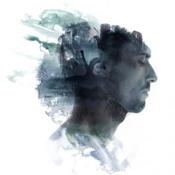 For most people, the concepts of learning and emotions immediately call to mind images of the brain. However, the central nervous system cannot function without the spinal cord. Doctors already know that the spinal cord can control reflexes without input from the brain. This control of reflexes is what leads you to pull your hand away from a hot stove before the brain registers the pain, for example.
For most people, the concepts of learning and emotions immediately call to mind images of the brain. However, the central nervous system cannot function without the spinal cord. Doctors already know that the spinal cord can control reflexes without input from the brain. This control of reflexes is what leads you to pull your hand away from a hot stove before the brain registers the pain, for example.
A new study published in PLOS One Biology suggests that the spinal cord does a lot more than control reflexes and send messages from the brain. Using functional MRI (fMRI) scans, researchers found that the spinal cord sometimes learns without the assistance of the brain.
Can the Spinal Cord Learn?
When a person masters a new skill, the process produces measurable changes in the brain. Functional magnetic resonance imaging scans monitor blood flow to brain regions, causing some areas to “light up.” Researchers at the University of Montreal used fMRI machines to simultaneously monitor blood flow in the brain and spinal cord. This process allowed them to witness activity associated with learning in both regions.
The team of scientists simultaneously viewed the brain and cervical spinal cord—a region of the spine that plays a role in hand movement. Researchers asked participants to perform a finger-typing task. As participants mastered this new skill, the brain showed predictable changes in blood flow. Surprisingly, participants also showed independent blood flow to the spinal cord. The results suggest that the spinal cord was learning independently of the brain, and the differences in blood flow suggest that the process is different between the two brain regions.The researchers argue that their results prove that the spinal cord plays an important role in the early stages of motor learning. If future research verifies this conclusion, it might offer new hope to spinal cord injury victims, who often have impaired connections between the brain and spinal cord.
The National Spinal Cord Injury Statistical Center estimates that more than 270,000 Americans have spinal cord injuries. People with spinal cord injuries may experience mental health issues such as depression, anxiety, and stress in connection with their condition, in addition to difficulties with mobility.
References:
- Innovative imaging study shows that the spinal cord learns on its own. (2015, June 30). Retrieved from http://www.sciencedaily.com/releases/2015/06/150630151452.htm
- Psychosocial issues of spinal cord injury. (n.d.). Retrieved from http://www.upmc.com/Services/rehab/rehab-institute/conditions/spinal-cord-injury/education-spinal-injury/Pages/psychological-issues.aspx
- Spinal cord injury (SPI) facts and figures at a glance [PDF]. (2015, February). Birmingham: National Spinal Cord Injury Statistical Center.

The preceding article was solely written by the author named above. Any views and opinions expressed are not necessarily shared by GoodTherapy.org. Questions or concerns about the preceding article can be directed to the author or posted as a comment below.


 Psychosocial Therapy for Families Affected by Brain Injury
Psychosocial Therapy for Families Affected by Brain Injury When Things Get Out of Hand: Trauma and the Triune Brain
When Things Get Out of Hand: Trauma and the Triune Brain How Your Favorite Music Can Help Your Brain Manage Pain
How Your Favorite Music Can Help Your Brain Manage Pain

Please fill out all required fields to submit your message.
Invalid Email Address.
Please confirm that you are human.
Leave a Comment
By commenting you acknowledge acceptance of GoodTherapy.org's Terms and Conditions of Use.